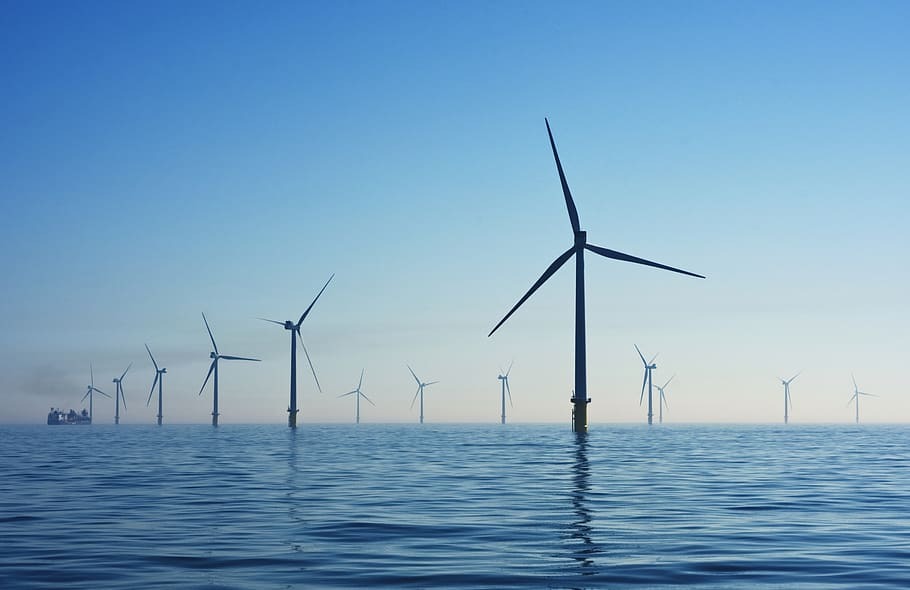For the first time ever, more electricity came from renewables than fossil fuels throughout the whole of Q1 2020.
During the first three months of the year, over 40% of Britain’s electricity came from renewable energy sources, with 30.6% coming from gas according to Drax’s newest Electric Insights Quarterly.
This was bolstered by a surge in wind generation on the back of the wettest and windiest February since records began. As such output from wind farms was up 40% from the same period last year, and almost out-produced gas in February, supplying 30.5% of Britain’s electricity versus 30.6% from gas.
The amount of wind on the system would have been even higher, had it not been for the outage on the Western Link subsea cable.
Wind power had an all-time high capacity factor in February, with onshore wind farms averaging 50% and offshore wind farms averaging 60%.
This not only beat out fossil fuels, with a 34% capacity factor for gas and just 17% for coal, but also the country’s nuclear fleet, which had a capacity factor of 59%. During the quarter 3.5GW of coal capacity was retired, leaving just over 5GW at three power stations, a far cry from the 28GW on the UK grid a decade ago.
Energy UK’s interim chief executive, Audrey Gallacher, said: “It is fantastic that renewables have overtaken fossil fuels for the first time – with 40% of Britain’s power generated from renewables – in the first three months of the year. This new record, along with the country’s current 40 days coal-free run, is a further testament to how far our sector has come.”
These wind power records looks set to continue to be broken as we move through 2020, with Hornsea One (1,218 MW) and East Anglia One (714 MW) both set to come online.
“With record wind output and depressed demand, electricity generation from fossil fuels was down 25% on this quarter last year, the largest fall on record,” explained the report. “This also gave one of the lowest quarterly carbon intensities on record. With an average of 173 g/kWh, emissions were down 20% on this time last year.”
However, the report emphasised that many of these renewable energy successes come in the midst of a trying time for the UK. The storms in January and February that helped with surging wind cumulatively killed eight people, left half a million without power and brought devastating flooding across Wales, the Midlands, Cumbria and Yorkshire.
The low demand has been driven by the COVID-19 pandemic, which has led to levels of demand not seen since the 1980s, and power prices to drop to a 12-year low. During March, this meant day-ahead prices averaged just £28/MWh, a one-third lower than the last year.
National Grid ESO has had to make a number of changes and additions to its toolkit to help it balance the grid throughout this period, including introducing the Downward Flexibility Management service and an urgent Grid Code modification.
Drax’s report explores how the demand profile has also changed, as peoples routines have adapted to the lockdown.
Gallacher added: “As we gradually begin to exit the lockdown, it is crucial that we base our economic recovery around the net-zero target and go further and faster in decarbonising our economy including in sectors such as heat and transport. And as we highlighted in our new paper – published yesterday – our industry stands ready to play a central role in the post-coronavirus economic recovery and deliver benefits for jobs, the economy and the environment.”
Drax’s report follow similar statistics from EnAppSys earlier this year that suggested renewables hit a new milestone, generating 35.4TWh between January and March, more than fossil fuels combined. This also represents a significant increase from Q1 2019, when they produced 27.2TWh.






